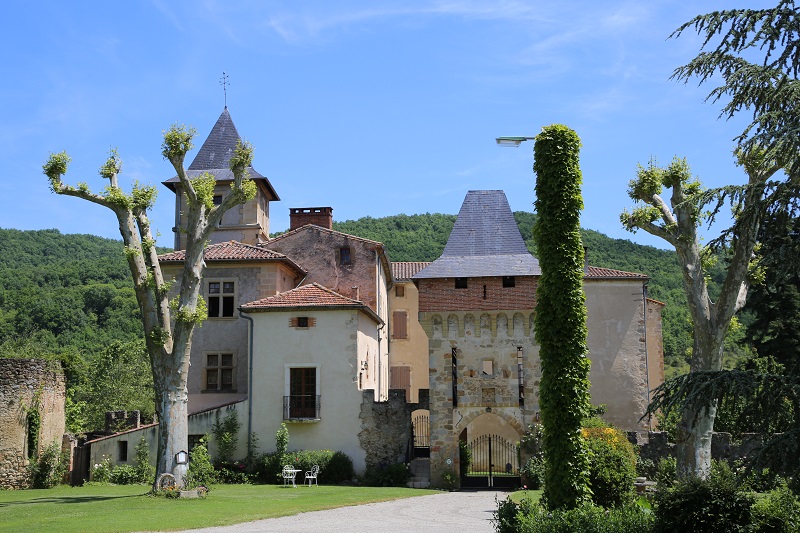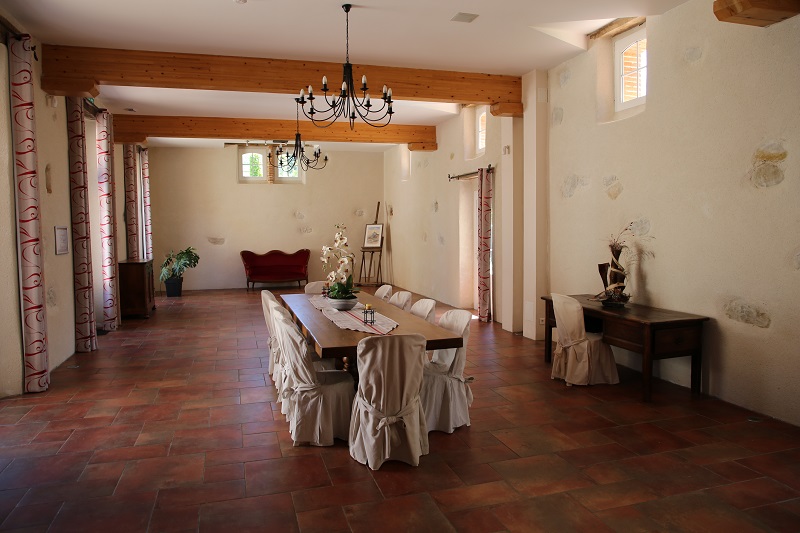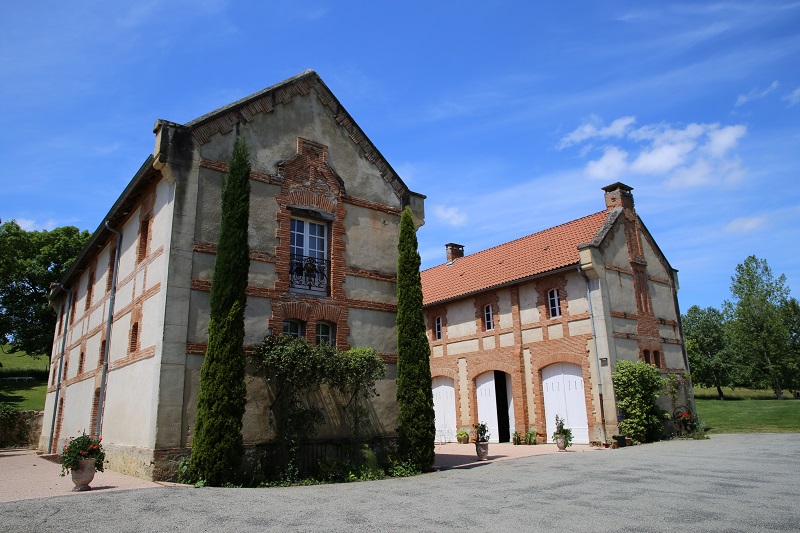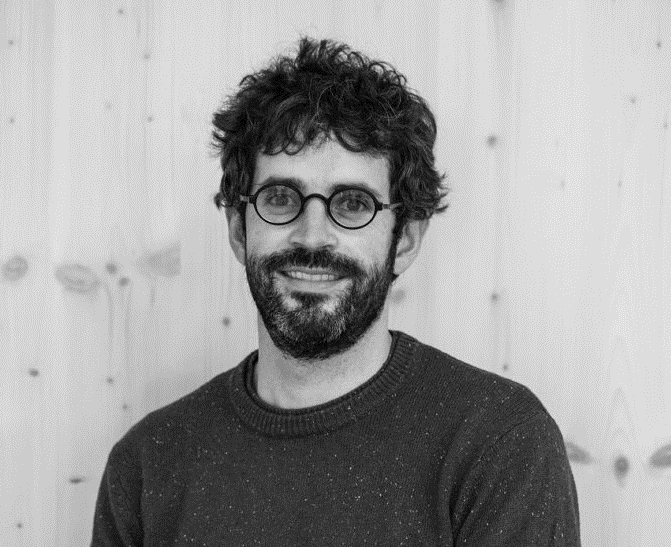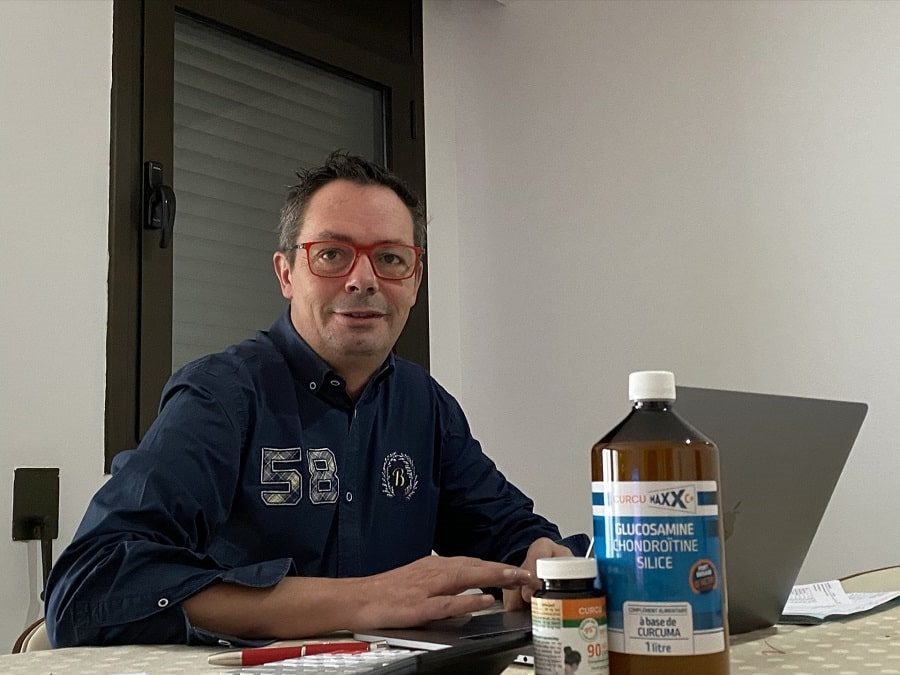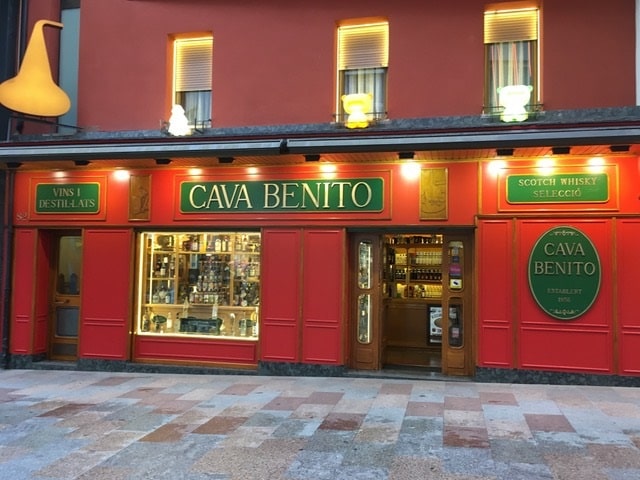De la Hille Castle (fr. Château de la Hille) was built at the beginning of the 16th century; its construction marks the end of the territorial wars between the counts of Toulouse and Foix in Montégut-Plantaurel.
Montégut-Plantaurel is a commune located in the north of the Ariège department, in the Occitania region (Pyrenees, France)
The new owners attached towers with battlements to the castle and built a carriage yard and a servant’s house at the beginning of the 19th century.
The castle is privately owned today; it belongs to Monica and Patrick Raluy. A Carrossière cozy home-hotel is in the former servants’ house today. The building itself is facing the castle. There are three large rooms and two suites.
The castle is suitable for weddings and other celebrations as well as small business seminars. The castle has a park of 12 hectares, shaded terraces and an outdoor jacuzzi.
Accommodation Rates (Breakfast Included)
A daily tourist tax (€0.66 per person per day) is applied for guests over 18 years old.
One can stay in the hotel from late April to late October.
1 adult guest – 70 € (low season); July, August and during the school vacations – € 80.
1 child up to 12 years old – 16 €
1 child below 12 years old – free of charge
Castle History
Several children from Germany and Austria escaped fleeing to Belgium after Kristallnacht in November 1938 (also known as the “Great Jewish Pogrom”). Boys and girls settled in Brussels but during the German invasion in May 1940, about 100 Jewish children aged 5 to 16 left Brussels with other refugees at the last moment in a freight train. The children arrived in a village in Seyre, Haute-Garonne, and were placed in a large barn after a week-long journey through France. There were not enough beds or food for everyone. The winter of 1940 was very cold. Fortunately, the Swiss Red Cross subdivision (Swiss Secours Enfants) raised funds to move the refugee camp.
Mr. Maurice Dubois organized and directed the restoration of Château de la Hille (it was an abandoned building at that time), and the children and elderly had to dig wells to supply the old castle with water and make it suitable for living. There was practically no heating and no electricity in the castle. Children, in order to survive, performed all types of work: homework, fieldwork, crafts, not forgetting about schooling; older children gave lessons to smaller kids.
More than half of the boys and girls who took refuge in the castle survived the war thanks to the Swiss and French defenders’ efforts.
What to visit in the district:
To preserve these memories, they opened a museum in Montégut-Plantaurel. It opens on Wednesdays from 14:00 to 18:00 and on Saturdays from 10:00 to 12:00. It can only be visited via making a reservation on the other days. The museum is in the Médiathèque building.
“Les Forges de Pyrène” is the museum of crafts and tools of the past with animation. It is suitable for adults and children.
How to get to?
From Paris: 7 hr 57 min (770 km) via A20
From Toulouse: 1 hr 9 min (94.0 km) via A66
From Andorra: 1 hr 59 min (117 km) via N20
From Barcelona: 3 hr 40 min (260 km) via C-16 and N20
From Madrid: 8 hr 26 min (803 km) via A-1 and A64
From Monaco: 6 hr 8 min (583 km) via A8
From Moscow: 39 hr (3,509 km) via E30/M1
From Belgrade: 19 hr 35 min (1,887 km) via E70
From Istanbul: 30 hr (2,837 km) via E70
From Bern: 8 hr 36 min (841 km) via A9
See here Pyrenees travel guide
See here France travel guide
See here Spain travel guide



